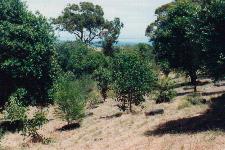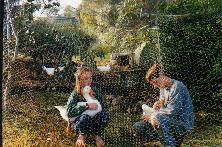 |
Bungala Ridge Permaculture Gardens REDUCE ... REUSE ... RECYCLE ... REPAIR ... RETURN ... REVEGETATE ... REPLENISH |
||||||||
|
|||||||||
|
|
What is Permaculture? Characteristics of Permaculture Permaculture is a design process with a focus on holistic and integrated systems analysis to create productive and sustainable ecosystems and to recover degraded landscapes. Permaculture draws on and validates traditional knowledge and experience, and incorporates sustainable agriculture practices, appropriate technology, land management techniques and strategies from around the world. Permaculture embraces and promotes organic agriculture. It aims to maximize symbiotic and synergistic relationships between site components. Systems that integrate annual and perennial crops increase biological diversity and offer other characteristics missing in monoculture systems. Ecological methods of production such as soil building practices, biological pest control, and composting are central to permaculture. Standard organic farming and gardening techniques that utilise cover crops, green manures, crop rotation, and mulches are emphasized in permacultural systems. The decision as to which "system" is employed is site-specific and management dependent. Gardening and recycling methods common to permaculture include edible landscaping, keyhole gardening, companion planting, trellising, sheet mulching, chicken tractors, solar greenhouses, spiral herb gardens, swales, and vermicomposting. Permaculture is a holistic design process and includes whole farm planning. Where appropriate techniques such as agro- forestry, swales, contour plantings, Keyline agriculture (soil and water management), rain harvesting, hedgerows and windbreaks, and constructed wetlands, aquaculture, intercropping, and polyculture may be utilised and applied. Recycling resources and nutrients is a key component of permaculture designs. Appropriate technologies advocated by permaculturists include solar and wind power, composting toilets, solar greenhouses, energy efficient housing, solar food cooking and drying, biodiesel and other alternative fuels. Permaculture design aims to be site specific, client specific, and culture specific. In addition to providing landscape solutions permaculture design ethics and principles can be applied to urban and social planning. Return to What is Permaculture
|
Hot Links!
This site is sponsored by
The boys with the geese |
|||||||
|
|
|
|
|||||||






